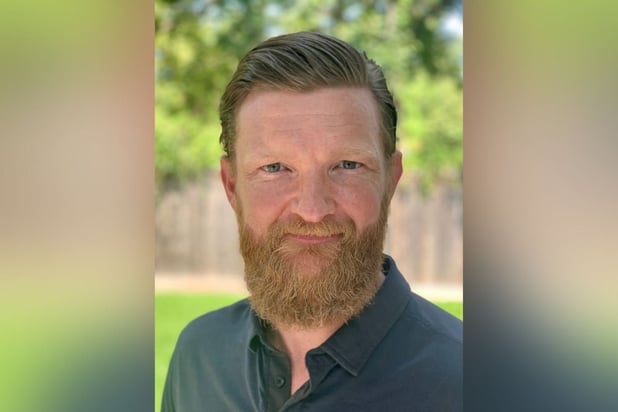

This article was produced in partnership with Amwins.
Bethan Moorcraft of Insurance Business sat down with Rob Battenfield, SVP, energy property practice leader at Amwins Wholesale Insurance to discuss the emerging renewable energy insurance market.
The renewable energy sector in the United States is on track to experience explosive growth in 2022 and 2023, with the energy transition towards solar, wind, and battery storage now at a full sprint.
In the United States, there’s an overriding political and ESG (environmental, social, and governance) movement that is providing “a major tailwind for the renewable energy sector,” according to Rob Battenfield (pictured), SVP and energy practice property leader at Amwins Wholesale Insurance.
In recent years, there’s been a huge movement away from fossil fuels, specifically coal, because of their negative impacts on climate change and the environment. In tandem, there’s been tremendous pressure upon insurers, banks, legal groups, developers, and corporations to support the fossil fuel divestment campaign and invest in clean energy.
To incentivize companies to support the energy transition, the federal government has historically approved a series of production and investment tax credits (PTC / ITC) for clean energy resources. Currently, the ITC is set to expire in a few years, therefore the next two years of solar development are expected to be the highest on record. With these tax incentives approaching expiration, the most likely scenario, according to Battenfield, is that Congress will extend the PTC for offshore wind and ITC for solar, which will cause an injection of capital into the renewable energy industry for the foreseeable future.
As the renewable energy industry has grown, insurers have started to realize that there’s profit to be made in the business. Many have started to bring their underwriting authority inhouse, which they had delegated to a few select managing general agents (MGAs) when the industry was still nascent, and they’re hiring or training their own specialized renewable energy underwriters to entrench themselves in the business and figure out how to make an underwriting profit against a challenging backdrop of extreme weather risk and political and ESG pressures which drive technological innovation.
“The traditional placement just 18 months ago was: ‘Typically 100% supported by one or two MGAs. for a utility scale solar or wind risk.’ But that’s fallen down with the reduction of available natural catastrophe capacity from the MGAs after some severe losses,” said Battenfield. “Now, they might only offer up to $10 million of severe convective storm limit to deploy on a project, whereas they used to offer full limits of $300 million, for example. The lending community got very comfortable with those full limits and so did tax equity. Now those limits have been reduced – that’s the new pressure point, as project stakeholders, namely tax equity and [the lenders], seek insurance that may not be commercially available.
“Where we’ve been really successful at Amwins is in developing alternative solutions to solve this lending issue for our retail partners with complex solar and wind accounts. For example, we might provide an excess placement for those MGAs, where we provide all the necessary shortcomings in limits or deductibles to make something a bankable project – we’ve been very successful at that. We’re also working with traditional insurers, who are now underwriting this business in a unique manner that allows them to meet lenders’ concerns and their counterparty obligations in a more cost-effective way.”
With all of the new complexity in the space, Amwins is available to help its retail partners navigating this risk transfer matrix. Battenfield stressed that it’s important for a wholesaler to add value and be a trusted advisor to supplement the work the retailer is being tasked with, between project developers, lenders, consultants, and tax equity to ensure that contractual risks and insurance requirements are fully understood by all parties early on in a project.
“It’s all about understanding the exposures and getting involved early,” he told Insurance Business. “If you have a developer, or even a big utility, where their procurement group is signing on to projects and signing counterparty agreements that agree to specific insurance requirements, early engagement is critical to review those contracts to make sure their insurance requirements can be met from a commercial perspective.
“For example, someone in procurement might not understand how hard it is or how expensive it could be to buy hail coverage in west Texas. So, they’ll sign a contract where they agree to buy full limits for hail on a $300 million solar installation, where it might only be commercially viable to buy $30 million. At Amwins, we help our retail partners to review those contracts, and help them understand early on what those projects’ insurance requirements are going to cost overall.”
Amwins is “uniquely positioned” to help retailers with clients in the renewable energy space, according to Battenfield, because of its ongoing commitment to developing specialty.
He added: “Our team of industry experts can help retailers and insurers understand the risks for … wind, solar, battery storage, and renewables. We’ve got huge commitments in the space, and a lot of my colleagues are industry experts and have the ability to really help retailers and underwriters create and deliver efficiently-priced solutions for their clients.”
About Rob Battenfield: As the energy property practice leader for Amwins Wholesale Insurance, Rob Battenfield helps retail brokers and insurers develop and create risk transfer solutions in the energy and renewables sector. With 20 years’ experience in energy and renewables insurance, Rob’s expertise is an asset to finding the right solutions to meet clients’ unique needs.
